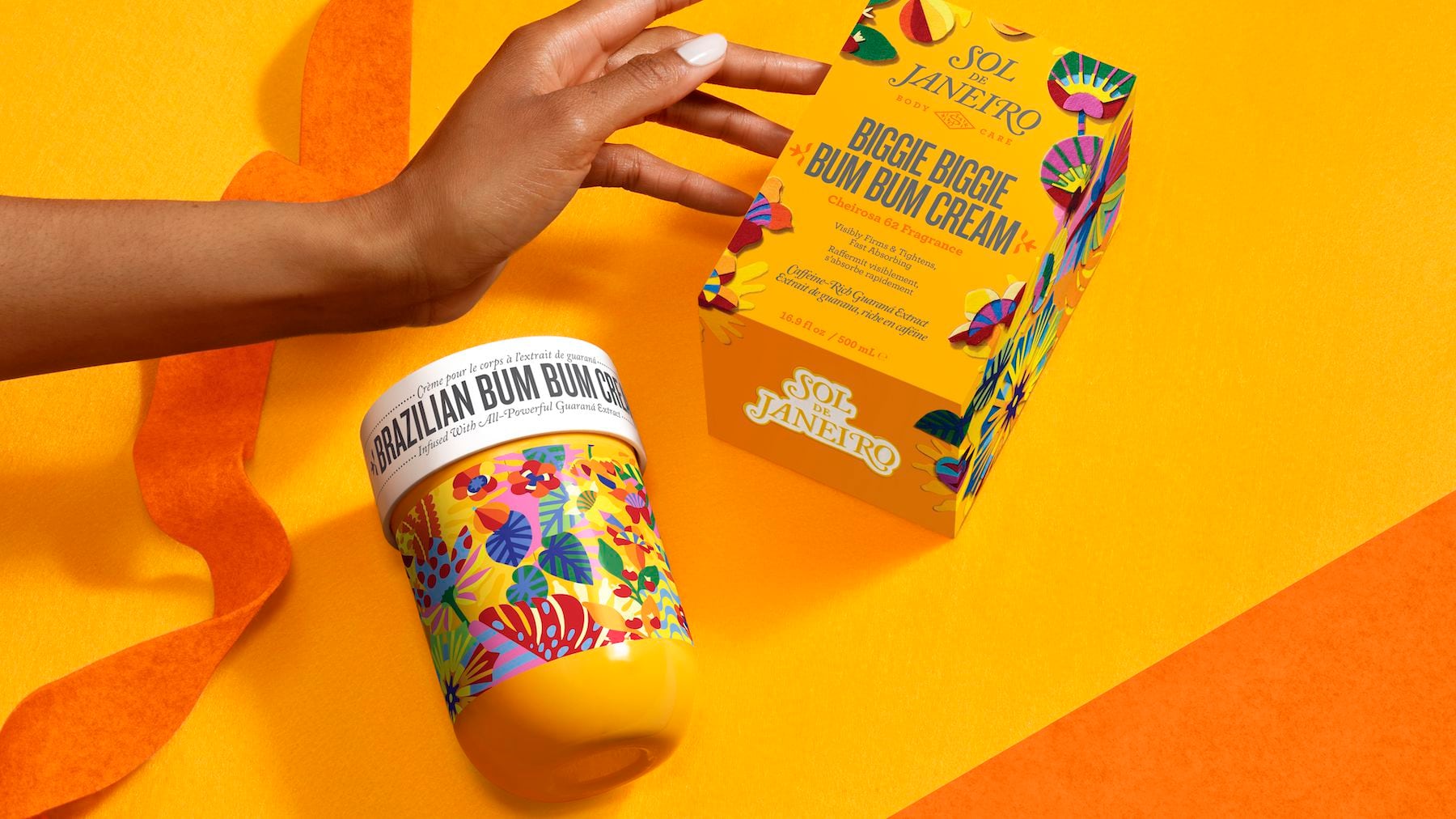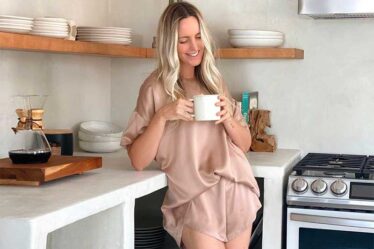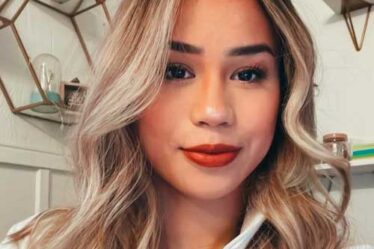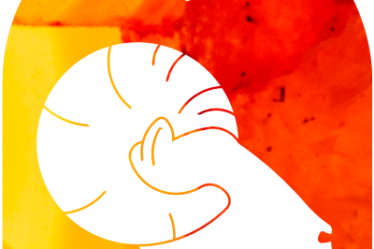
In 2024, shopping for beauty is being driven by a combination of influencer-led impulse buys and practical online research.
Customers are scooping up viral fragrances or blushes recommended by TikTok’s “it-girls” like Alix Earle or Sofia Richie, while at the same time doing meticulous research on skincare ingredients and products that align with shoppers’ limited budgets. TikTok continues to set off beauty crazes, which often correlate with strong sales for everything from Hailey Bieber-inspired makeup to hair oil. But beyond the latest trending products, beauty consumers have also taken a practical turn with an interest in cosmeceuticals and hair treatment ingredients that deliver instant outcomes.
“Consumers are very educated and they’re looking for efficacy. When brands can provide very clear explanations of how they deliver results, they’ve been really effective in the market,” said Sasha Radic, managing director at Jefferies.
But beauty shoppers continue to show their price sensitivity, which is expected to hold for 2024. This is especially true among Gen-Z shoppers as they turn to drugstore staples over premium skincare and swap eau de parfums for body sprays.
Drugstore Brands Dominate
Since CeraVe’s emergence as a TikTok darling in 2020, more brands are flexing their dermatological and cosmeceutical expertise.
Fellow L’Oréal Group brand La Roche-Posay took the leading spot in consumer trend analysis firm Spate’s annual ranking of top skincare brands based on growth and search volume, released in Dec. 2023, ahead of Instagrammable premium labels Glow Recipe and Drunk Elephant. L’Oréal Group said the line was the “number one growth contributor” to the 28.7 percent quarterly sales growth in the company’s dermatological beauty division last September. La Roche-Posay has benefited from the virality of its Cicaplast Baume B5, which has earned 1.1 billion views on TikTok, as well as trending topics such as this year’s “French pharmacy” brand craze. With over 235 million views on TikTok, the trend was spurred by influencers including Charlotte Palermino and Emilie Kiser heading into pharmacies while visiting France, extolling the virtues of affordable but expert-backed brands like La Roche-Posay and Avène.
“La Roche-Posay has taken the drugstore scene by storm. They’ve been around forever, but in the US, their trajectory over the last five years has been just incredibly strong,” said Addison Cain, beauty strategy and innovation manager at Spate.
An emphasis on clinical branding and results has also led to strong results for Paula’s Choice, which came in third on Spate’s annual list; Unilever also called out the brand as a growth driver for its prestige beauty division in its October third-quarter earnings report.
The accessibility of drugstore dermatological labels is expected to be an ongoing selling point in 2024 as analysts predict consumers’ price consciousness to grow. TD Cowen forecasted in a January 2024 note that the year will be one of “value-hacking” in beauty, a concept that has turned finding a bargain into a status symbol on social media.
Hair Care’s Multi-Step Routine
Consumers in search of shinier, fuller hair are expanding their routines beyond shampoo and conditioner as a range of treatments, serums and oils have flooded the market.
Already a longtime skincare staple, serum for the scalp is seeing growing interest with 15.7 percent annual search growth, according to Spate. Thanks to an acceleration of launches in the past two years, scalp serum can now be purchased at Sephora by nearly every hair care brand offered at the retailer such as Ouai, Kérastase and Gisou. Following the success of its Leave-In Molecular Hair Mask, K18, which was purchased by Unilever in December, launched its hair oil in March 2023. This trend has heavily benefitted brands such as Mielle Organics, whose rosemary hair oil still consistently finds itself in the number one ranking on Amazon’s beauty best-sellers list after the product went viral on TikTok.
Rather than competing with established brands’ core products like shampoo and conditioner, hair treatments are especially useful to startups as novel products that can acquire new customers.
Body Care Levels Up
From Dr. Barbara Sturm and Augustinus Bader to Tatcha and Drunk Elephant, buzzy facial skincare brands went into body care en masse in recent years with many more expected in 2024. Data shows that this influx of body care products on the market has piqued consumers’ interest.
On Dec. 10, Rare Beauty became the latest to extend into body care with the launch of its 10-product “Find Comfort” collection made up of body lotion, hand cream, fragrance products and merch.
According to data from Pinterest’s 2023 Pinterest Predicts trend report tracking the fastest-growing trends that are still on the ascent, “body skincare routine” saw 1,025 percent growth last year, while “body care” experienced 845 percent growth. The firming subsegment has been especially popular as Sol de Janeiro’s cult Brazilian Bum Bum Cream has been a hit on TikTok. It graced Amazon’s beauty best-sellers list in 2023, and the brand saw 189 percent sales growth in the first half of parent company L’Occitane Group’s 2024 fiscal year.
The Return of the Body Spray
Body spray, once a dominant Y2K staple among Millennial teens, is back for Gen-Z and Gen Alpha.
Sol de Janeiro is one of the biggest breakout stars in the body spray category. Like its core Bum Bum Cream, the line’s Brazilian Crush Cheirosa Hair & Body Fragrance Mist has become a viral sensation with TikTok fragrance influencers. More new launches are coming to market: the aforementioned Find Comfort line by Rare Beauty includes a scented body spray.
Popular with Gen-Z, newcomers are rising to unseat millennial body spray classics Bath & Body Works and Victoria’s Secret. According to Piper Sandler’s 2023 “Taking Stock With Teens” report, Sol de Janerio surpassed Victoria’s Secret to become the second most popular fragrance brand for female teens.
Much more affordable than eau de toilette or eau de parfum offerings, body sprays are expected to assert their dominance throughout the year as shoppers prioritise both value and trend in their beauty purchases.
Blush Makes Its Case as a Makeup Winner
Celebrities and influencers have been popularising blush products with online tutorials featuring “clean-girl” style looks with minimal eye makeup. Selena Gomez-owned Rare Beauty’s Soft Pinch Liquid Blush has emerged as a hero product for the brand after finding itself all over influencers’ feeds. Nudestix brand ambassador Sofia Richie boosted the brand’s Nudies Cream Blush All-Over-Face Color stick blush after announcing on TikTok that it had been applied by makeup artist Pati Dubroff for Richie’s wedding to Elliot Grainge last year.
Among Google’s list of top trending beauty search terms for 2023 were cheek-focussed makeup looks including “strawberry makeup” — driven by Bieber in an August 2023 video that earned 22.7 million views on TikTok — and the “tomato girl” aesthetic. Others included the contour-heavy “latte makeup” trend and “cold-girl makeup” tutorials that emphasise the unrestrained use of blush and highlighter.
Blush is still on its way up, according to experts.
“There’s just significant interest in the complexion and colour complexion category,” said Cain. “We’re expecting face bronzer sticks, blush sticks, skin tints and setting powders to continue their upward growth.” “Blush stick” searches increased by 28.2 percent and “liquid blush” went up by 21.7 percent over the past year, according to Spate.
More launches are likely on the way in 2024. In Rhode founder Bieber’s “strawberry” tutorial, she used an unnamed cream blush alongside her brand’s skin care products, hinting, “I can’t say where the cream blushes are from … wink wink.”



